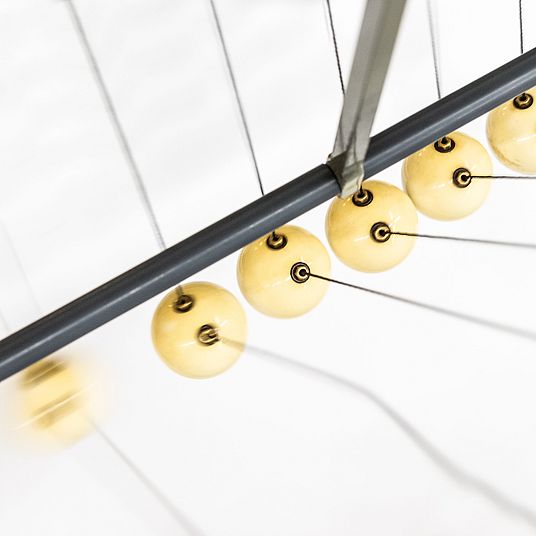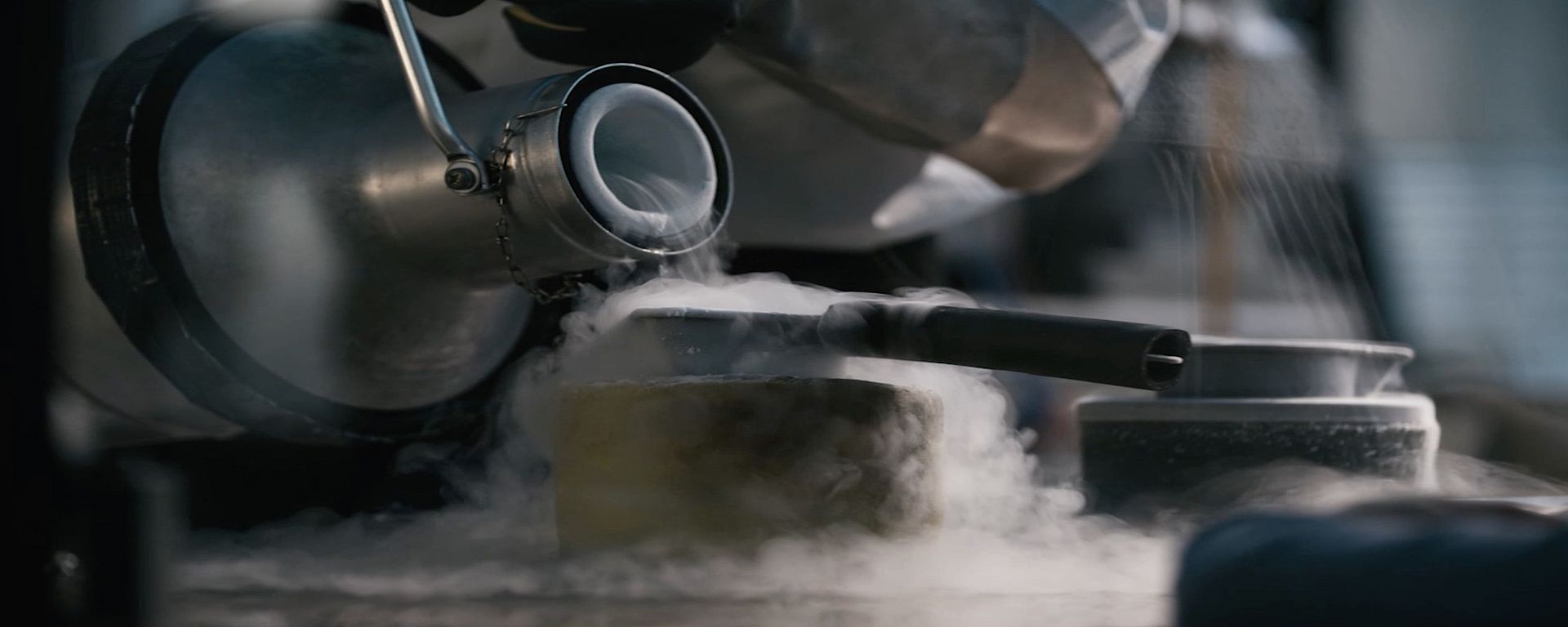
Photo: Deutsches Museum
Physics
Physics Exhibition Themes
This exhibition explores the following themes and contents:
Reconstruction of a room with early mechanical tools. Photo: Deutsches Museum | Christian Illing
Mechanics
People started using mechanical tools, such as the inclined plane or block and tackle systems, very early on in human history – without being aware of the associated laws of physics. The Greek word “mechos”, meaning “tool”, gave us our term “mechanics”, which has been in use since the early modern era.
A number of experiments and original instruments illustrate the steps that finally enabled Galileo Galilei to formulate the crucial laws of mechanics for the first time at the beginning of the 17th century. In 1687, Isaac Newton presented the first self-contained, mathematically formulated theory of mechanics in his “Principia Mathematica”. The laws of classical mechanics are still applicable today in almost all areas of daily life.
Mechanics also deals with the behaviour of liquids and gases. Even in antiquity, important findings were made in these areas – for example by Archimedes of Syracuse to the question of why a body floats. Hydrostatics covers the different properties of solids, liquids and gases. Hydrodynamics deals with flowing liquids and gases, and therefore plays an important role in ship and plane building.
“A lot to touch, try out and discover: with this principle, our Physics exhibition, which opened in 1959, is still particularly popular with children and young people today. ”
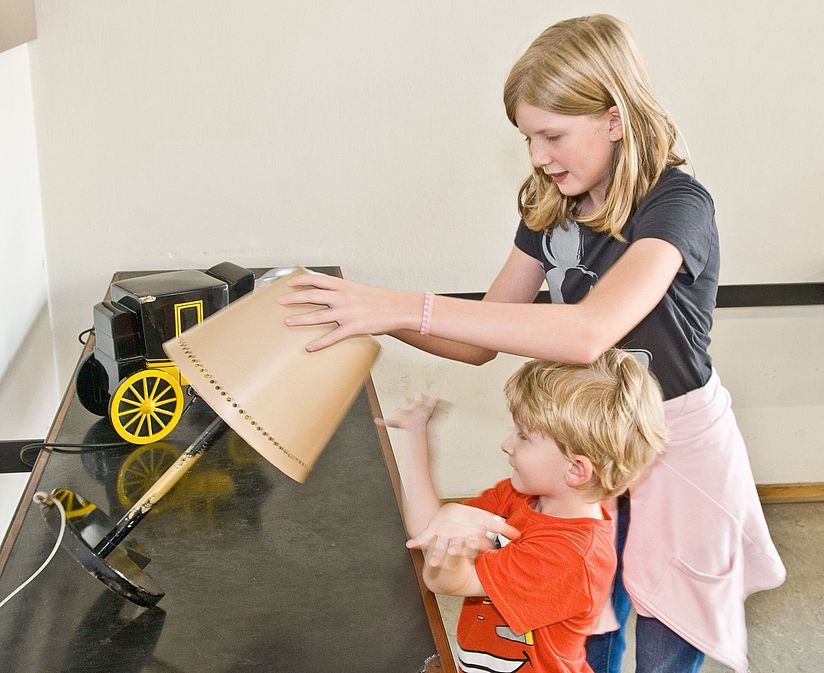
Children with a lamp on the Physics activity tour Photo: Deutsches Museum
Mechanics Interactive Activity Stations
In the app and the “Physics for Children” flyer, you will find simple explanations of the laws of physics – along with suggestions for exploring them together.
Interactive activity station 1: knocking over a lamp/ app number 160
Interactive activity station 2: testing the tumbler toys/ app number 161
Tour through Galileo’s Workroom
This film shows Galileo Galilei’s workroom from his Florentine period (1610–1623). A free interpretation of the workroom was built in the Physics exhibition by the Deutsches Museum workshops in the 1950s. The film has no sound (running time: approx. 2 minutes).
View inside the Oscillations and Waves exhibition area. Photo: Deutsches Museum | Christian Illing
Oscillations and Waves
Oscillations and waves form a special category of mechanical motion. This includes the motion of a pendulum as well as the propagation of sound or water waves. All of these processes can be described as periodic motion, in which movement and rest alternate. In the 17th century, scientists such as Galileo Galilei, Christiaan Huygens and Isaac Newton focused intensively on the various oscillation processes.
If oscillations spread out progressively in their environment, waves form. These have remarkable properties: wave trains that run into one another can intensify one another or cancel each other out (interference).
Many interactive activity stations in the exhibition are devoted to mechanical and acoustic oscillations. The transfer of waves and the phenomenon of interference, when two wave fields intensify or weaken one another, are also illustrated in a series of experiments.
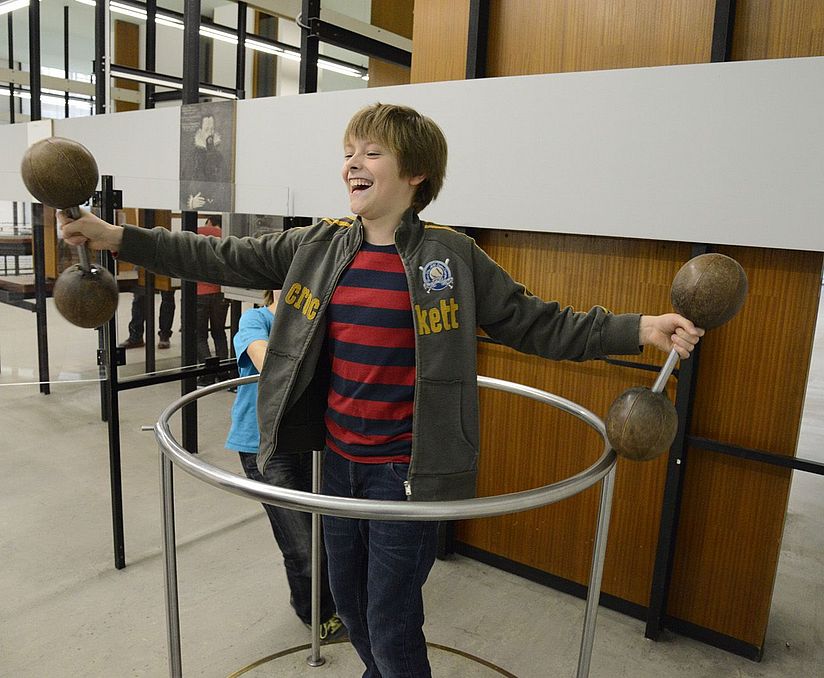
Photo: Deutsches Museum
Conservation of Angular Momentum Interactive Activity Station
Try it out for yourself: control how fast you spin and use your body to find out what the conservation of angular momentum means. On our rotating platform, you can control the speed by pulling your arms in or stretching them out – just like when doing a pirouette in figure skating. What is behind all this?
Find out more in our app audio on the following page: to the “Conservation of angular momentum” audio.
The Deutsches Museum App
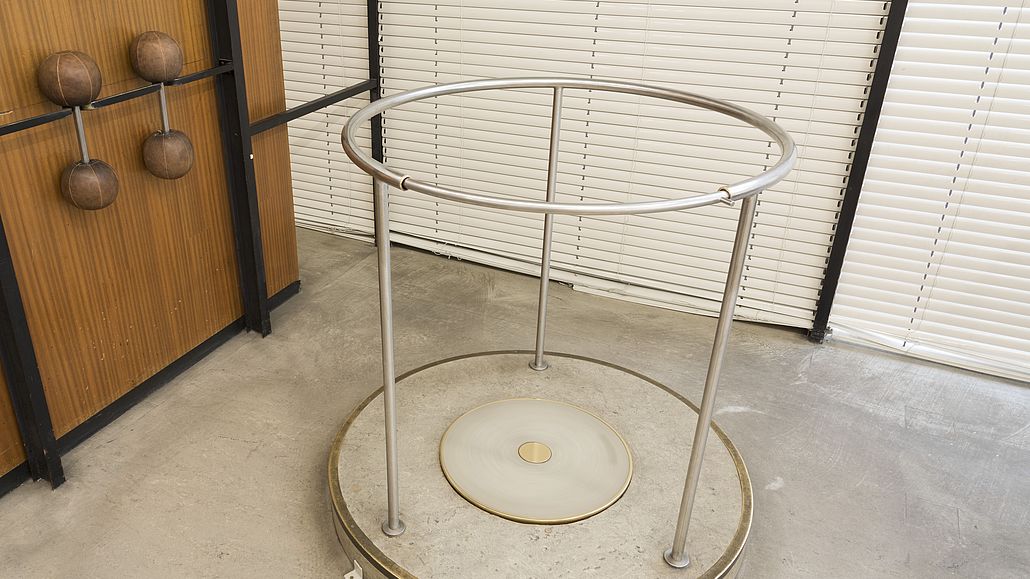
Conservation of angular momentum
Learn more about the conservation of angular momentum in our audio.
“Liquid nitrogen” demonstration in the Thermodynamics exhibition area. Photo: Deutsches Museum
Julius Robert Mayer’s apparatus for the mechanical equivalent of heat in the Thermodynamics exhibition area. Photo: Deutsches Museum | Christian Illing
Thermodynamics
What is heat? For a long time, there were very different ideas about this question. In the 18th century, for example, there was the widespread notion that heat was an invisible substance that penetrates bodies. Irrespective of such interpretations, however, a mathematical theory of heat was formulated in the 19th century solely on the basis of measurable variables such as temperature and heat quantity. Building upon this, and in an effort to comprehend how a steam engine works, there was a key breakthrough in the understanding of heat processes in the mid-19th century. Now there was empirical evidence that heat could be converted into (mechanical) work – and that heat could in turn be produced through work. In conversion processes like these, it is only the sum of the heat and work that remains constant. This fundamental finding is summarised in the general principle of the conservation of energy: energy cannot be created, but only converted from one form into another. In this way, energy was introduced as a new higher-level variable.
This exhibition is packed with experiments and demonstrations relating to thermodynamics, for example the Joule-Thomson effect, heat conduction and heat radiation. You can also see a Linde air liquefaction plant. Experiments with liquid nitrogen are demonstrated every day in the exhibition. More about the daily programme
View inside the Electrostatics and Magnetism exhibition area. Photo: Deutsches Museum | Christian Illing
Electrostatics and Magnetism
Research into electricity and magnetism has a very long history. Due to the significance of the compass when out at sea, the phenomenon of magnetism was addressed from the early days of seafaring. In the 19th century, this research was continued by famous scientists including Carl Friedrich Gauss and Wilhelm Weber, who analysed the Earth’s magnetic field with great accuracy.
Electrical phenomena also began to be investigated on a larger scale at the beginning of the 18th century. The development of the frictional generator made it possible to charge objects electrically. The friction generator was therefore at the very centre of the research, and was also used to educate the public. Demonstrations of electrical phenomena were very popular – they took place in the salons of the nobility or prosperous middle classes and also at fairs.
This area of the exhibition features interactive activity stations and original apparatus from the fields of electrostatics and magnetism.

